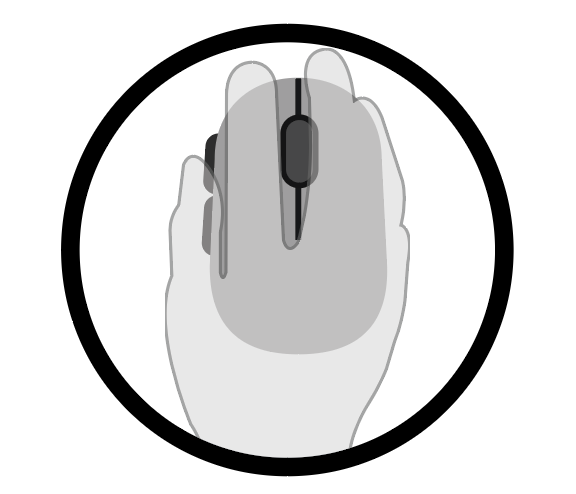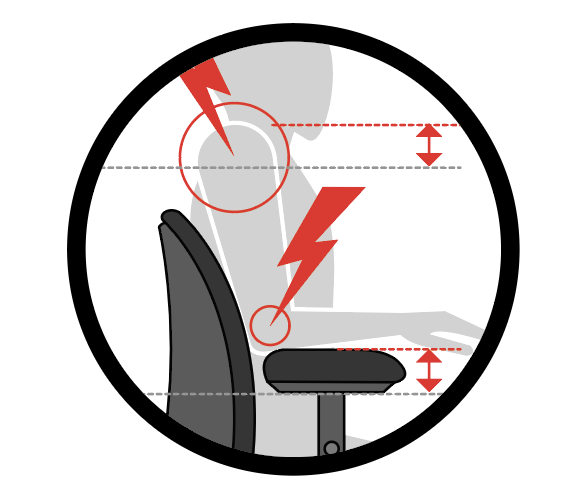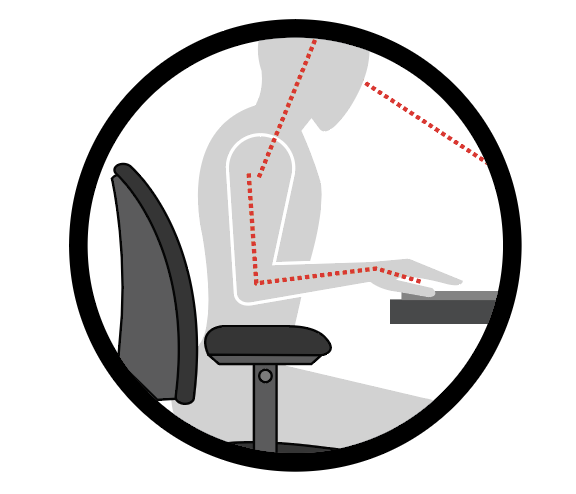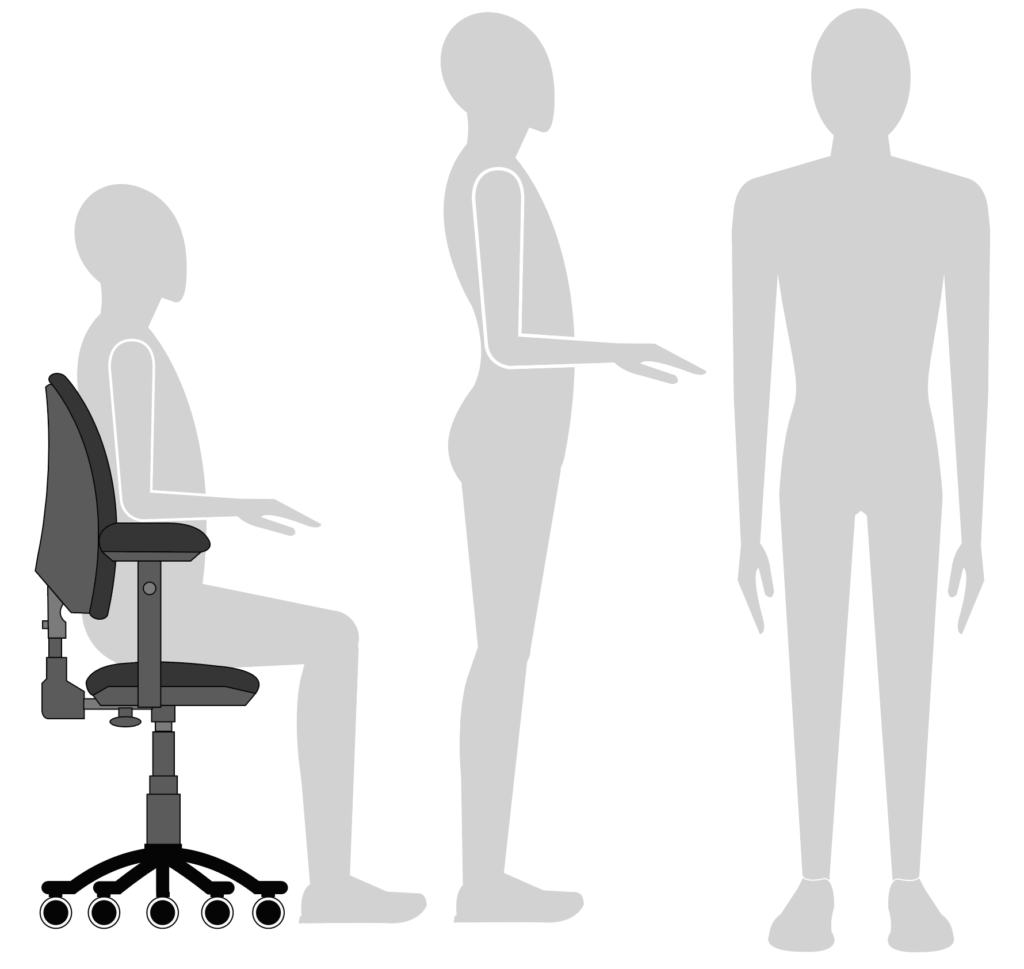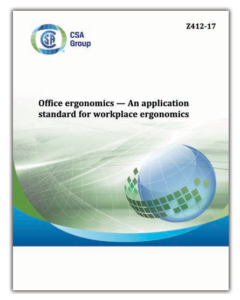INTRODUCTION
Ergonomics can be defined as fitting the job to the worker.
Not all workers are the same size and everyone has limits.
Ergonomics aims to design workstations, work processes, equipment, and tools to fit you.
If a job does not fit a worker, the worker is more likely to be exposed to risk factors that may lead to musculoskeletal injury.
As a worker, it is important that you know how to adjust your office workstation to suit your needs.
Main Ergonomic Risk Factors in the Office
Every person responds to ergonomic risk factors in different ways.
For example, one worker may have symptoms of an injury while another worker performing the same tasks may not.
Ergonomic risk factors should be identified and reduced to lower the risk of injury for all workers.
Even those workers who are not experiencing pain should take ergonomics seriously to reduce the risk of developing an injury.
In Ontario, no legislated standard exists that specifically addresses office ergonomics.
However, a “general duty clause” exists in the Occupational Health and Safety Act (OHSA, 2020). Section 25(2)(h) states:
“An employer shall take every precaution reasonable in the circumstances for the protection of a worker.”
Office ergonomics is widely accepted as a “reasonable precaution”.
The Workplace Safety and Insurance Board (WSIB) readily accepts injury claims produced from office work.
There are also sections under the Occupational Health and Safety Act (OHSA) (2020) as as well as regulations that apply to musculoskeletal disorders (MSD) prevention and ergonomics in an office environment:
OHSA Section 25(2)(a)
Provide information, instruction and supervision to a worker to protect the health and safety of the worker.
OHSA Section 25(2)(d)
Acquaint a worker or a person in authority over a worker with any hazard in the work.
OHSA Section 25(2)(l) and (m)
Provide the Joint Health & Safety Committee (JHSC) or health & safety representative with the results of health and safety reports and advise workers of the reports.
OHSA Section 25(1)(b)
Employer shall ensure that equipment provided by the employer is maintained in good condition.
Industrial Establishment Regulation (IER) (O.Reg. 851), Section 45(a)
The employer shall ensure that the objects required to be lifted, carried or moved, shall be lifted, carried or moved in such a way and with such precautions and safeguards as will ensure that the lifting, carrying or moving of the material does not endanger the safety of any worker.
Note: Employers have a legal responsibility to provide a safe workplace under the OHSA. This includes improving the workplace and implementing measures to protect workers from all hazards*, including those related to Musculoskeletal Disorders.
* including awkward postures, force, static postures, repetition.
There is a ‘standard’ for Office Ergonomics that was published in 2017. The Canadian Standards Association Office ergonomics – An application standard for workplace ergonomics, (CSA) Z412-17, supersedes the previous editions under the title of Guideline on Office Ergonomics. This new standard reflects new technology and work practices, and “is now presented in the form of a standard rather than a guideline”.
Musculoskeletal Disorders (MSD) in the Office
MSD are disorders of muscles, tendons, nerves, and other soft tissue. Carpal tunnel syndrome, tendonitis, tension neck syndrome, and low back disorders are examples. These disorders typically develop gradually over time and are generally caused by overuse.
Repeated work requiring the use of the arms and hands can lead to MSD of the hands, wrists, neck, and shoulders. Sitting for prolonged periods of time in a chair may lead to MSD of the back, hips, and legs.
The table below outlines occupational risk factors and symptoms for common disorders of the upper body associated with the office environment.
Disorders
Occupational Hazards
Symptoms
Tendonitis / Tenosynovitis
- Repetitive wrist motions
- Repetitive shoulder motions
- Sustained hyper extension of arms
- Prolonged load on shoulders
- Pain, weakness, swelling, burning sensation or dull ache over affected area
Epicondylitis (elbow tendonitis)
- Repeated or forceful rotation of the forearm and bending of the wrist at the same time
- Same symptoms as tendonitis
Carpal Tunnel Syndrome
- Repetitive wrist movements
- Pain, numbness, tingling, burning sensations, wasting of muscles at base of thumb, dry palm
De Quervain’s Disease
- Repetitive hand twisting and forceful gripping
- Pain at the base of thumb
Thoracic Outlet Syndrome
- Prolonged shoulder flexion
- Extending arms above shoulder height
- Carrying loads on the shoulder
- Pain, numbness, swelling of the hands
Tension Neck Syndrome
- Prolonged restricted posture
- Pain
Before Purchasing Office Equipment:
Ensure the equipment provided fits the user (i.e. one chair may be too large for one user yet too small for another user).
Try Before You Buy. Arrange to get samples of equipment from your supplier for users to trial if possible.
Develop a standard for purchasing based on the CSA Z412-17 Office Ergonomics Standard to ensure that equipment will ‘fit’ the workers and be suitable to the tasks they perform.
If the workstation is being shared, you may want to consider more adjustability (e.g. height adjustable workstation).
When selecting office products adjustability is essential.
For more information on purchasing the correct equipment contact an OHCOW Ergonomist.
Navigate to other sections of this Reference Guide using the links below:
HOME | INTRODUCTION
